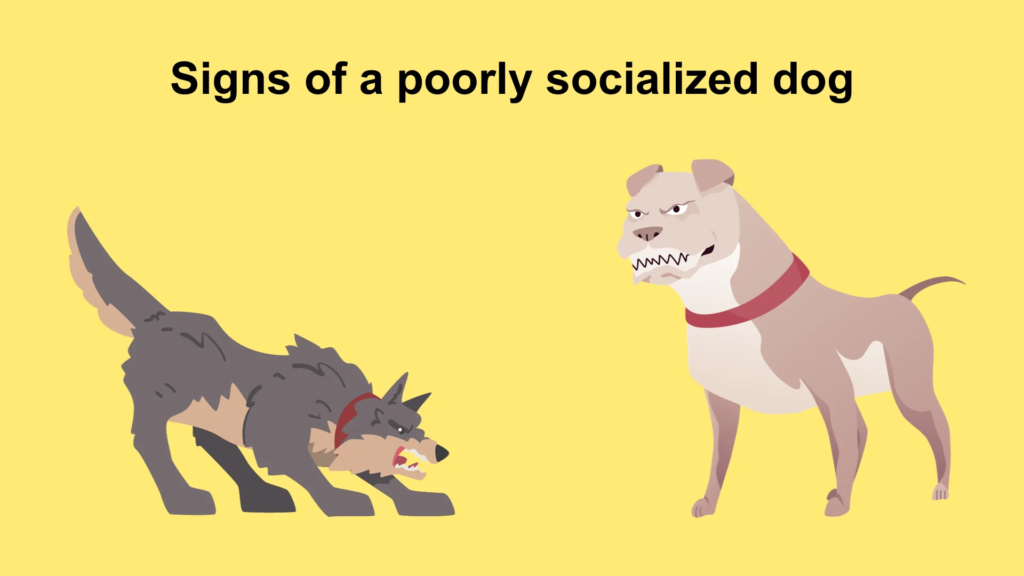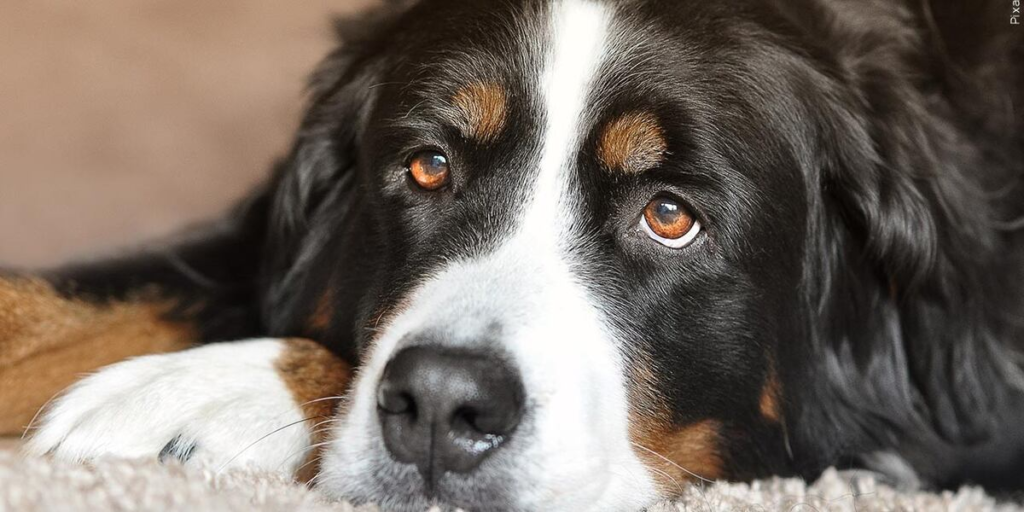Signs of Poorly Socialized Dog

Signs of Poorly Socialized Dog:- Have you ever encountered a dog that appears to panic at the mere sight of a skateboard or becomes skittish when a friendly hand reaches out? These behaviors might be more than just quirky responses. They can be signs that the dog missed out on key socialization opportunities during its puppyhood.
Proper dog socialization is the hidden gem that can transform a nervous, anxious canine into a confident and happy companion. It’s the essential ingredient to ensuring that your furry friend is comfortable and well-adjusted, whether at the dog park, on a crowded city street, or in a room full of unfamiliar faces. A well-socialized dog can take these new situations in stride with calm, ease, and a wagging tail.

In this discussion, we’ll explore the world of dog socialization, highlighting the importance of early social experiences and examining the signs that your dog might need some help in this area. Additionally, we’ll cover practical steps to help even the most nervous or aggressive dogs become more confident and secure in their social interactions.
Understanding Dog Socialization: Why It’s Crucial
Dogs, much like their ancestors, wolves, are social creatures. In the wild, wolves live in groups and rely heavily on interactions with their pack members for survival. Though dogs have been domesticated for thousands of years, they still carry these pack-oriented behaviors. For dogs, socializing isn’t just about having fun with other pups at the park; it’s about learning how to become part of a community.
When dogs interact with each other, they’re picking up essential communication skills. Through play, observation, and simply being around other dogs, they learn to understand social cues. For example, a dog can learn which body language signals friendliness and which ones indicate a more dominant or aggressive stance. They also figure out how to express themselves, whether they want to initiate play or signal that they’ve had enough interaction for the moment.
But socialization doesn’t stop with other dogs. Well-socialized dogs are also comfortable around various humans and even other animals. The more experiences they have with different people, environments, and situations, the more confident they become. As a result, they are less likely to react fearfully or aggressively when confronted with something new or unfamiliar.
For example, a well-socialized dog taken to a new place or introduced to new people will be far less likely to panic. Instead, they’ll recognize that new experiences can be fun and exciting rather than something to fear.

Signs of a Poorly Socialized Dog
Signs of Poorly Socialized Dog;- Not all dogs have had the opportunity to develop these critical social skills during puppyhood. This can result in behaviors that might be mistakenly interpreted as signs of a “bad” dog. In reality, these dogs are often reacting in the only way they know how based on fear or discomfort in social settings. Some common signs of poor socialization include:
- Fearful behavior around strangers or other dogs: These dogs may display body language such as flattened ears, lip licking, yawning, cowering, avoiding eye contact, and tucking their tail between their legs.
- Aggression towards strangers or other dogs: This can include intense staring, barking excessively, growling, snapping, or holding their ears erect in a defensive manner.
- Physical withdrawal: A poorly socialized dog may back away or raise its hackles when approached by another dog or person.
- Reactivity during walks: Dogs that are not well socialized might show signs of fear or aggression even if no other dogs or people are nearby.
These behaviors are often defense mechanisms triggered by unfamiliar or stressful situations. Dogs that haven’t been properly socialized may react with fear or aggression as a way to protect themselves from what they perceive as threats.
How to Help a Poorly Socialized Dog
If your dog exhibits any of the behaviors mentioned above, don’t worry—there are steps you can take to help them. With patience, understanding, and the right approach, even the most nervous or reactive dogs can learn to feel more comfortable in social situations.
1. Use a Shorter Leash
A shorter leash is a simple yet effective tool for controlling your dog in stressful environments. If your dog tends to lunge or react aggressively to other dogs or people, keeping them close to you with a three- or four-foot leash can help maintain control. This way, you can manage their behavior before it escalates.
2. Consider Using a Muzzle
While muzzles might seem like a last resort, they can provide peace of mind for both you and your dog. If your dog has a history of lunging, growling, or nipping, a muzzle can ensure that no harm comes to anyone during stressful encounters. Coastal Pet’s Soft Basket Muzzle, for example, offers a comfortable and safe option for dogs that need this extra precaution.

However, it’s important to note that a muzzle is not a cure for your dog’s behavior. It should only be used in situations where your dog may react aggressively. Avoid putting your dog in unnecessarily stressful scenarios just because they’re wearing a muzzle. If your dog finds the dog park overwhelming, for instance, don’t assume a muzzle will solve the problem. Instead, work on socialization gradually, in less intense environments.
3. Gradual Exposure to New Environments
One of the most effective ways to help a poorly socialized dog is through controlled exposure to new environments. Start small by introducing your dog to unfamiliar situations in a calm and controlled manner. For example, you can take them on short walks in less busy areas before gradually moving to busier streets.
4. Positive Reinforcement
Rewarding your dog with treats and praise when they exhibit calm and appropriate behavior during social interactions is key to reinforcing positive behavior. When your dog associates new experiences with rewards, they’ll start to view these situations in a more positive light.
5. Invest in Professional Training
If your dog’s socialization issues are severe, investing in professional training may be the best course of action. Obedience training can teach your dog essential commands like sit, stay, and come, which can help manage their behavior in social situations. A professional trainer can also provide guidance on how to gradually desensitize your dog to their triggers.
Long-Term Strategies for Socializing Dogs
For dogs with more ingrained socialization issues, additional strategies may be necessary:
- Behavior Modification Programs: Tailored programs focusing on specific issues can help rehabilitate dogs with deep-seated social anxieties.
- Socialization Retreats: Some facilities offer immersion programs where dogs are exposed to controlled social settings under the guidance of experts.
Ultimately, socializing a dog is about more than teaching them how to play nicely with others. It’s about building their confidence and helping them feel secure in a wide variety of settings. Whether your dog needs a little help or a lot, the right approach can make all the difference. With time, patience, and the right tools, you can turn a nervous pup into a happy, well-adjusted canine companion.
Also Read:-




